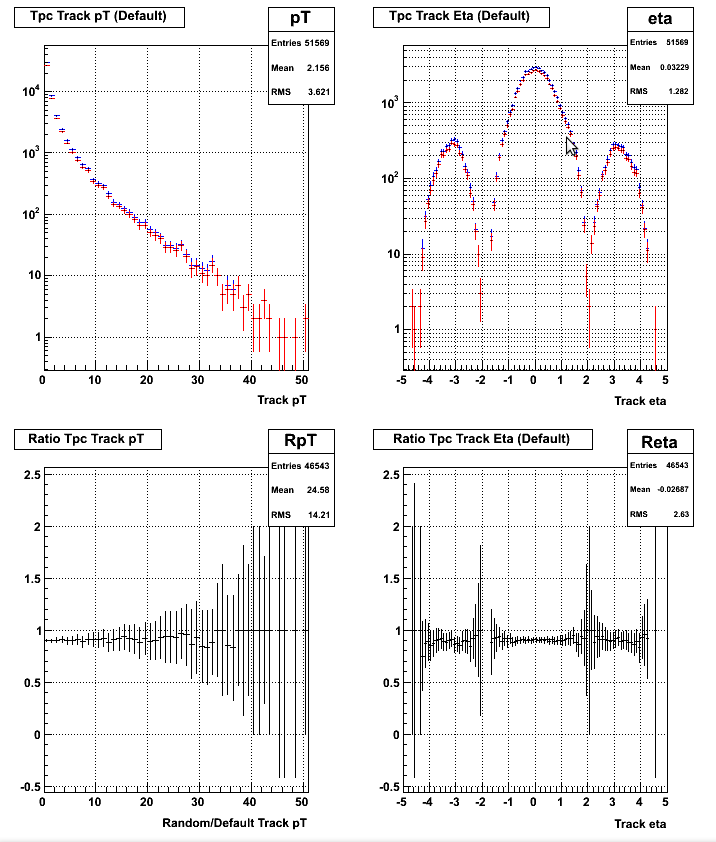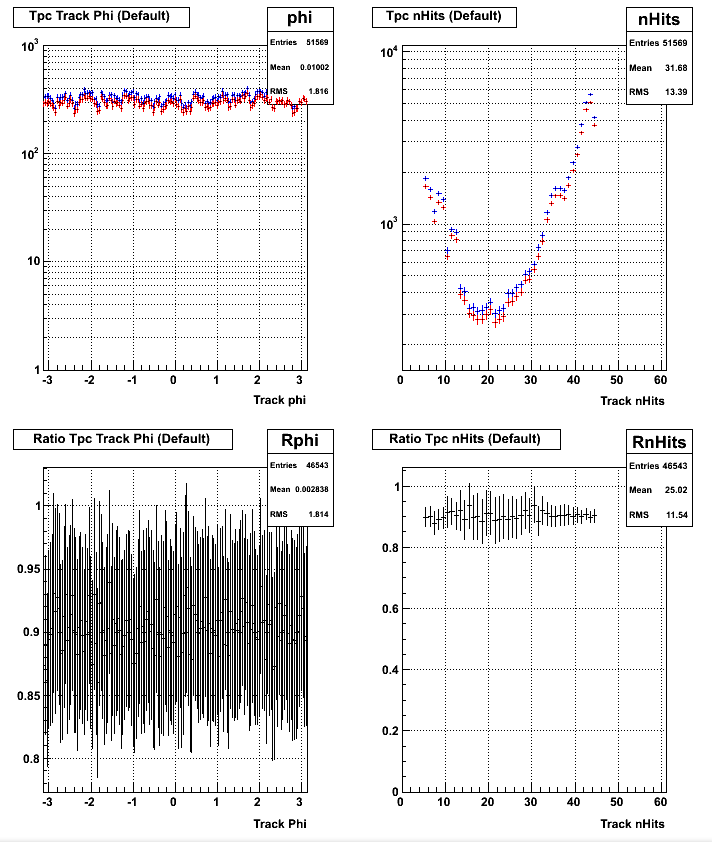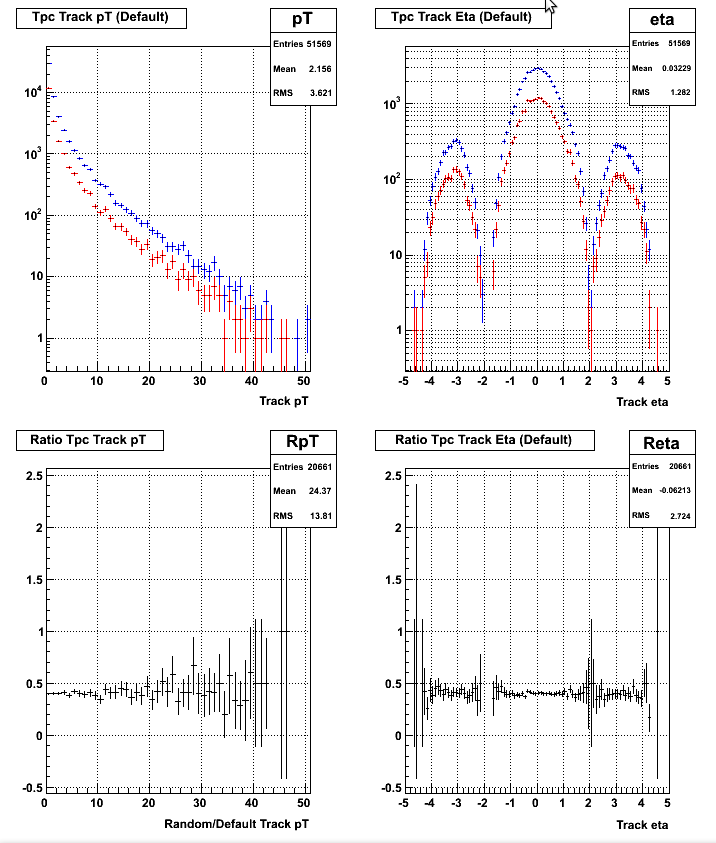Using StRandomSelector to Artificially Reduce Track Efficiency
In order to better estimate the error in the jet energy scales arising from Tpc efficiency error, we have been looking into the possibility of examining the effects of reducing jet efficiency artificially using an unbiased random track selection mechanism. In theory, this would reduce the efficiency of track selection prior to compiling pT, eta, and phi information and allow us to either examine the effects of Tpc efficiency reduction in the data set and estimate error, or perhaps even calculate the error directly.
To this end, we developed the StRandomSelector. StRandomSelector can be used to randomly select TObjects from any root TCollection. This is done by registering the TCollection with the StRandomSelector and then using the StRandomSelector to iterate over the collection, allowing it to randomly determine the next track that should be returned for that iteration.
The code for StRandomSelector can be found in ~wwitzke/filesfordistro/RandomSelector.tar.gz, including build scripts and unit tests. To build, untar the code and run cons from the new RandomSelector directory. This should build the library and run the unit tests. The class is documented in the header file, StRoot/StRandomSelector/StRandomSelector.h, and examples of using the class can be found by examining the unit tests, in RandomSelector/UnitTests/StRandomSelectorTestSuite.h. This class should work both in compiled code and using CINT.
To see if this method of random selection produced our desired loss of efficiency, we applied it to a set of approximate 50,000 tracks in 2000 events taken from 2006 simulated data (partonic pT bin 45-55). The results can be seen in the images below.
This first set of graphs shows the effects of a 0.9 ratio efficiency. That is, one in ten tracks are randomly ignored. These graphs show histograms for pT, eta, phi, and number of hits for both the complete set of tracks (shown in blue) and the set of tracks with efficiency reduction (shown in red). In addition, the ratio between the two sets of tracks is shown.


The following set of graphs show the effects of a 0.4 ratio efficiency. That is, six out of every ten tracks are selected for removal.


These appear to show the desired unbiased loss of efficiency.
- wwitzke's blog
- Login or register to post comments
